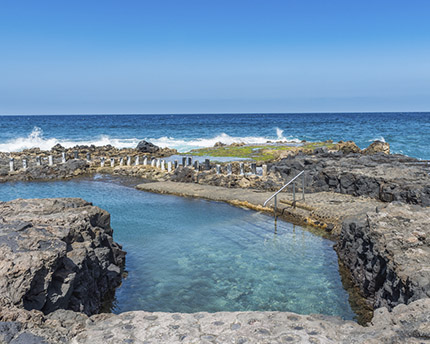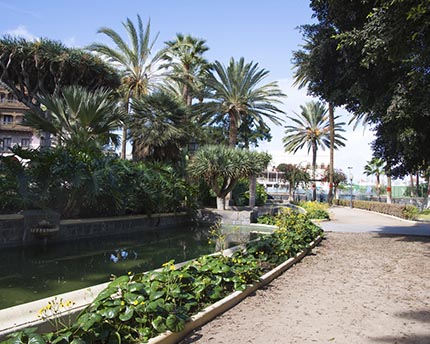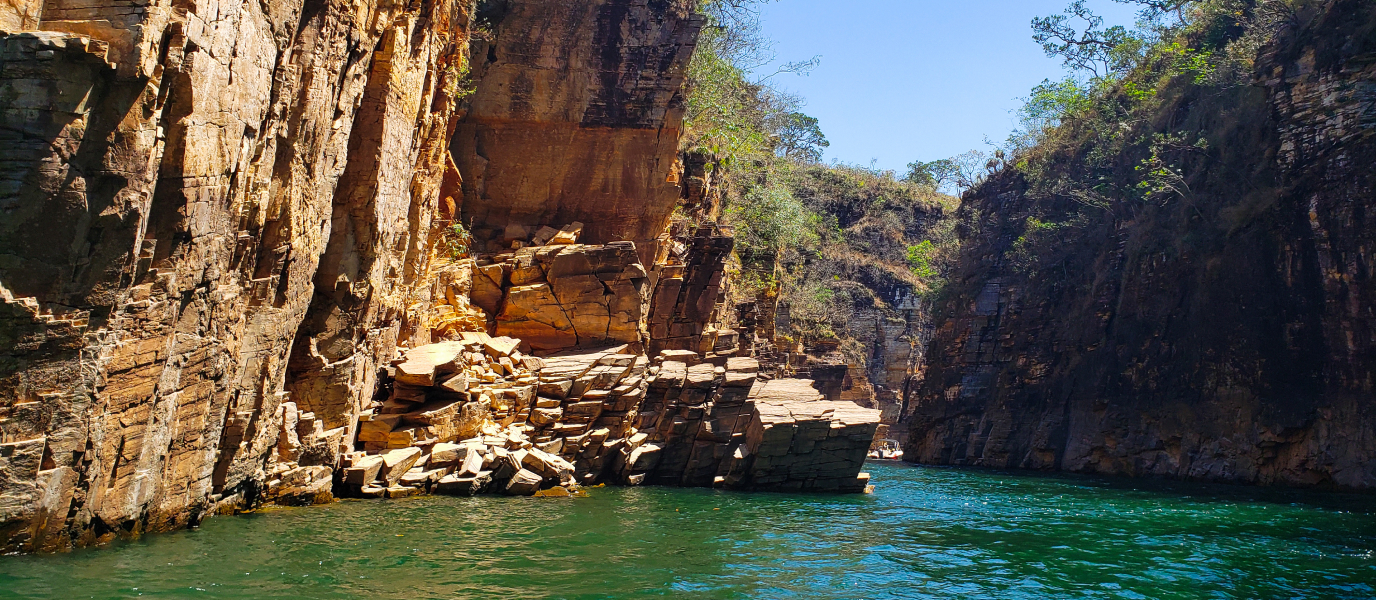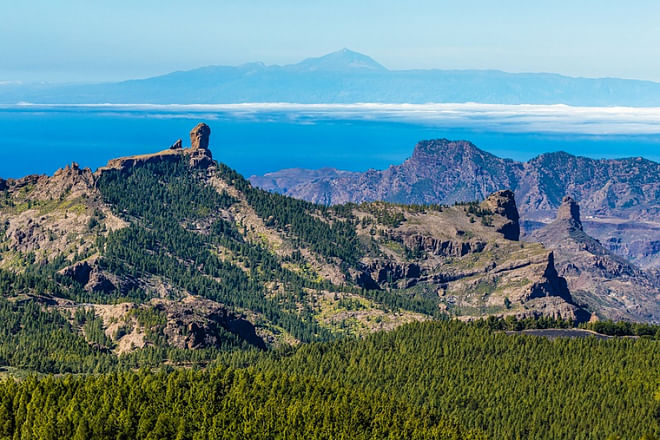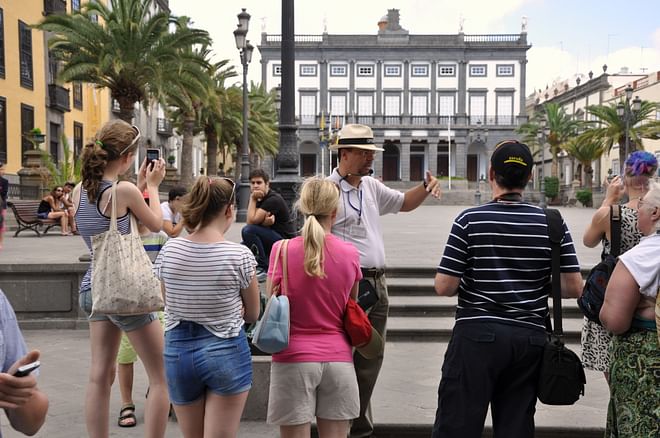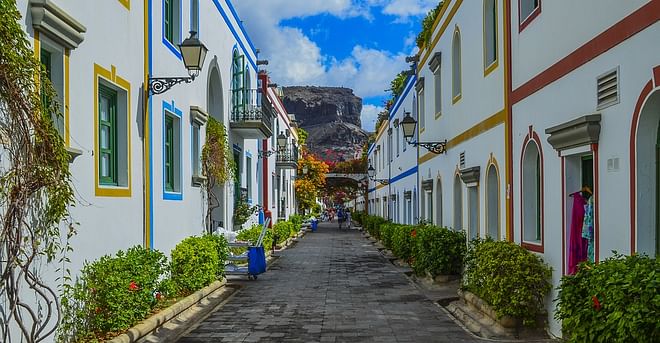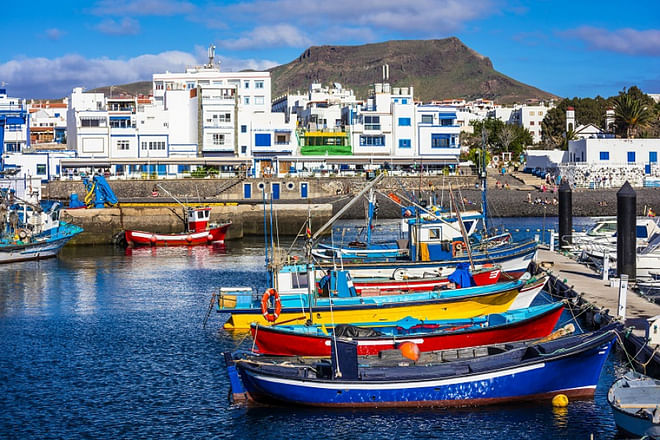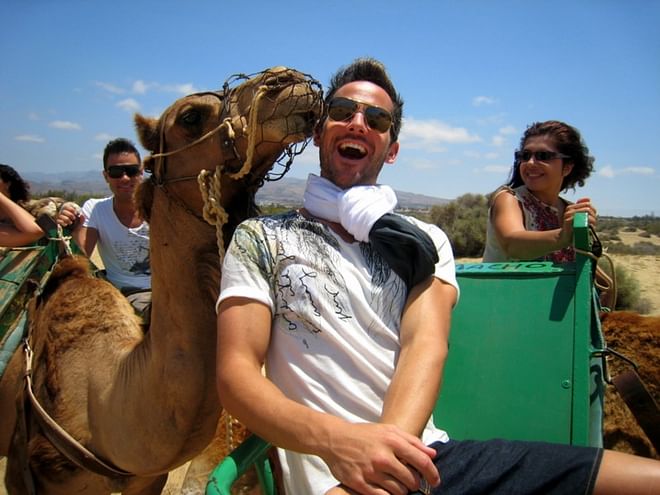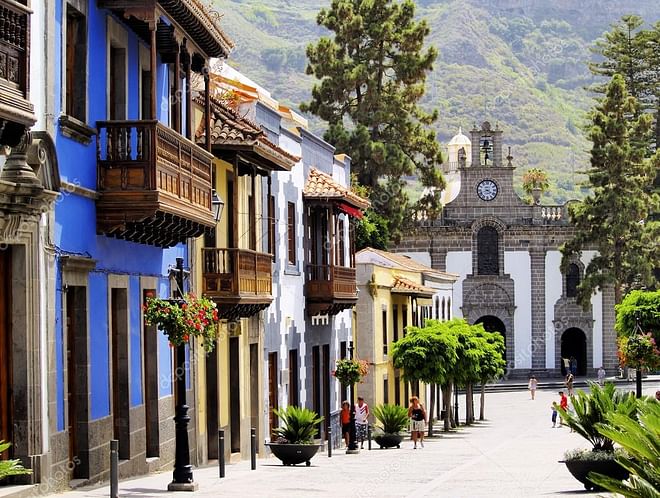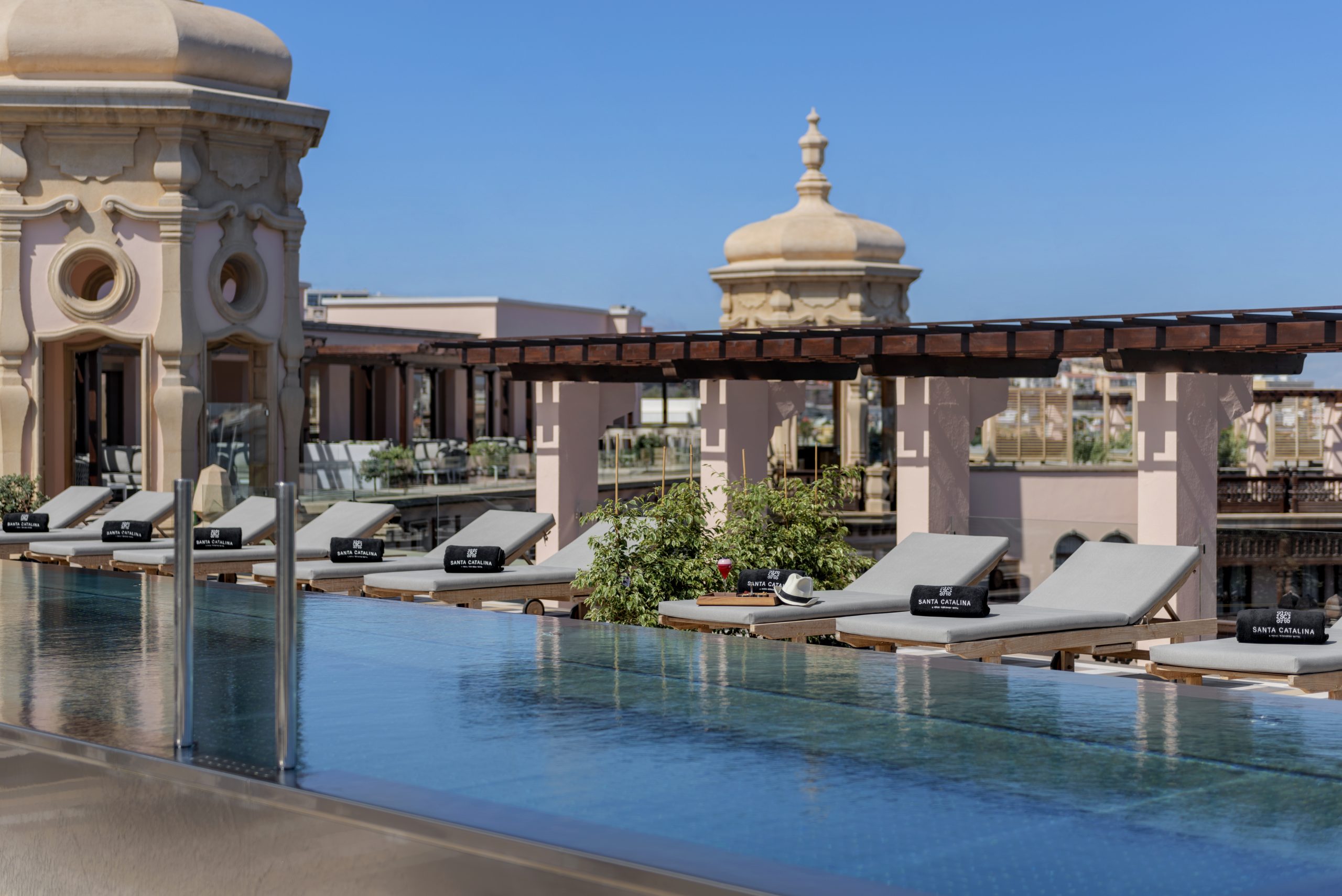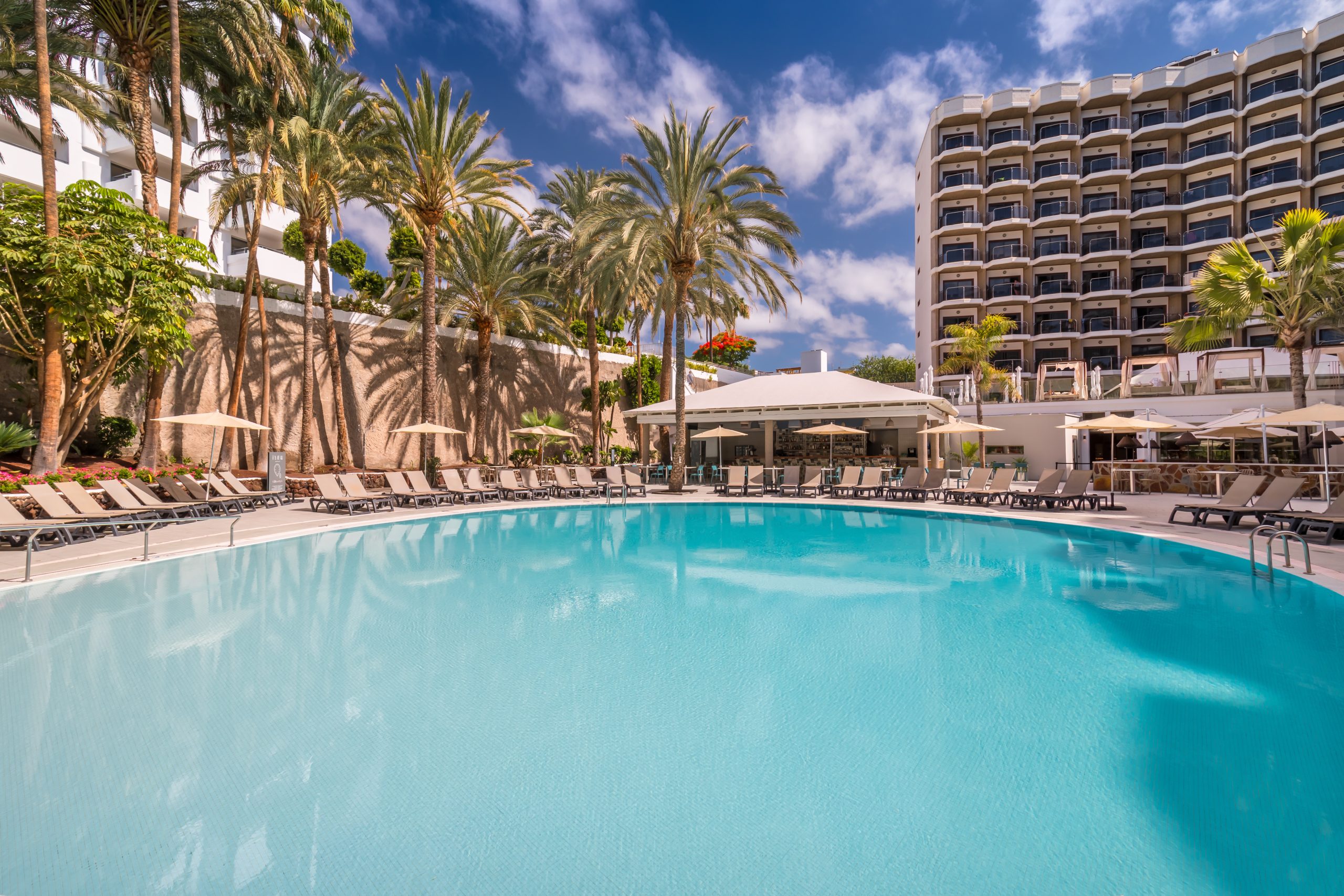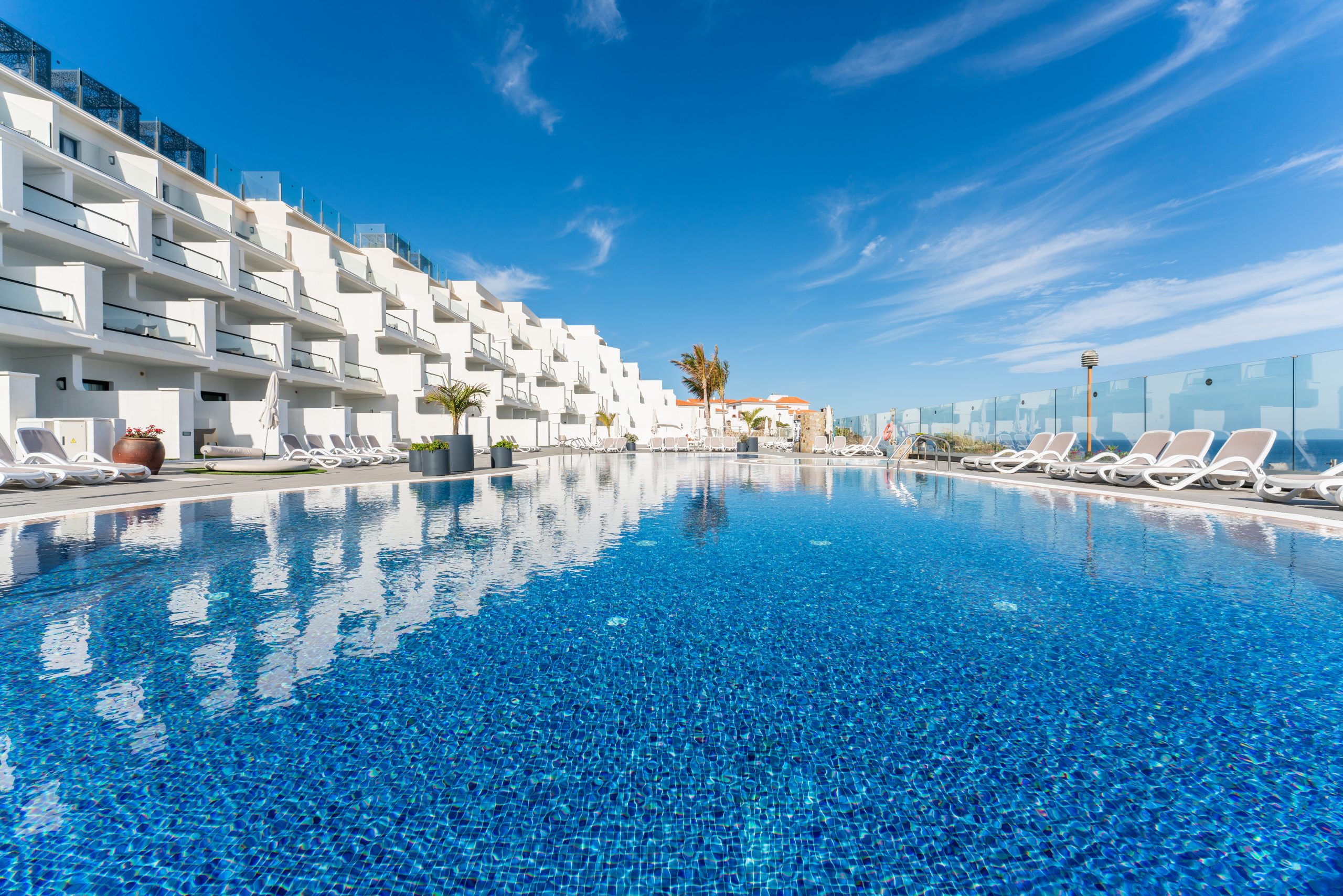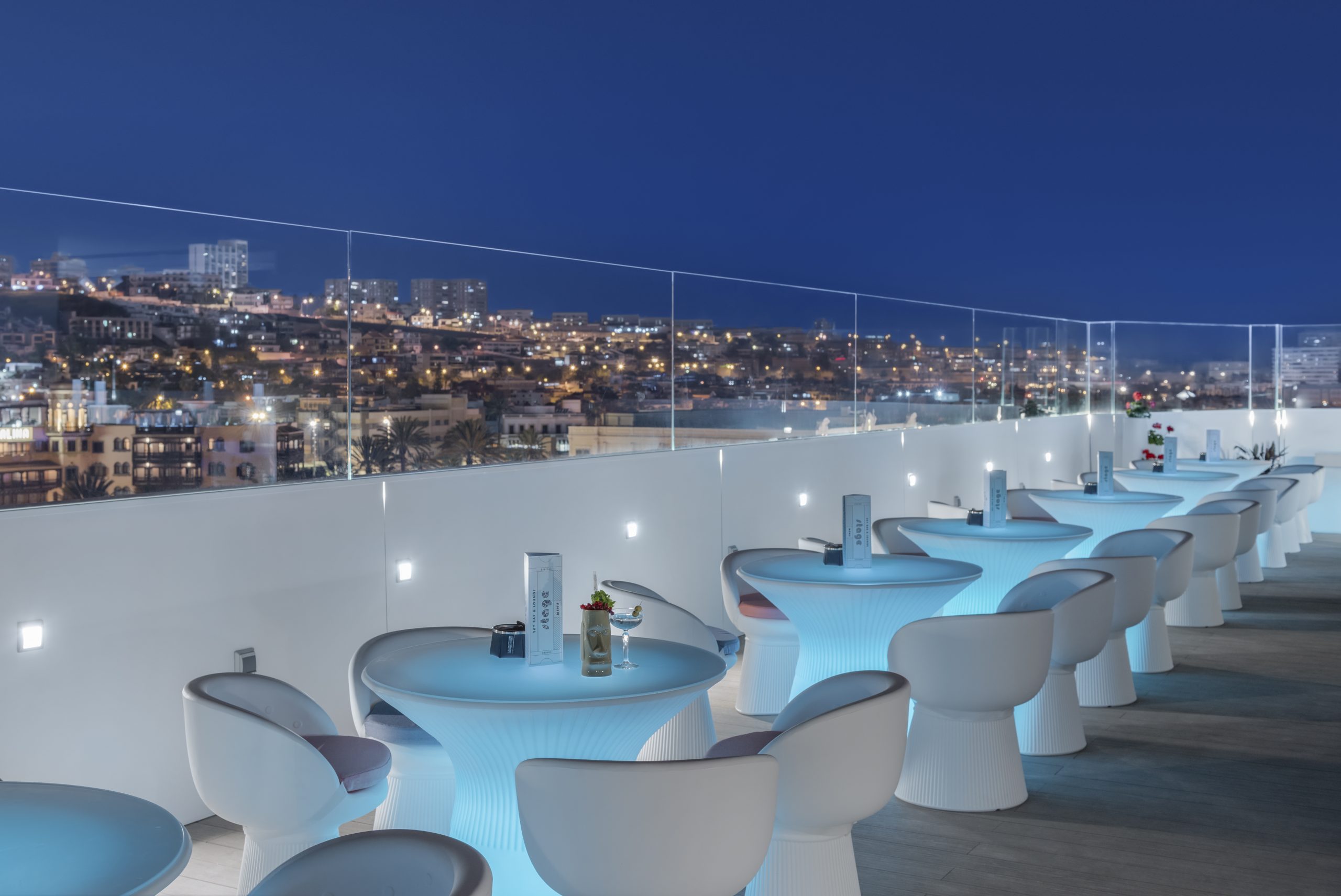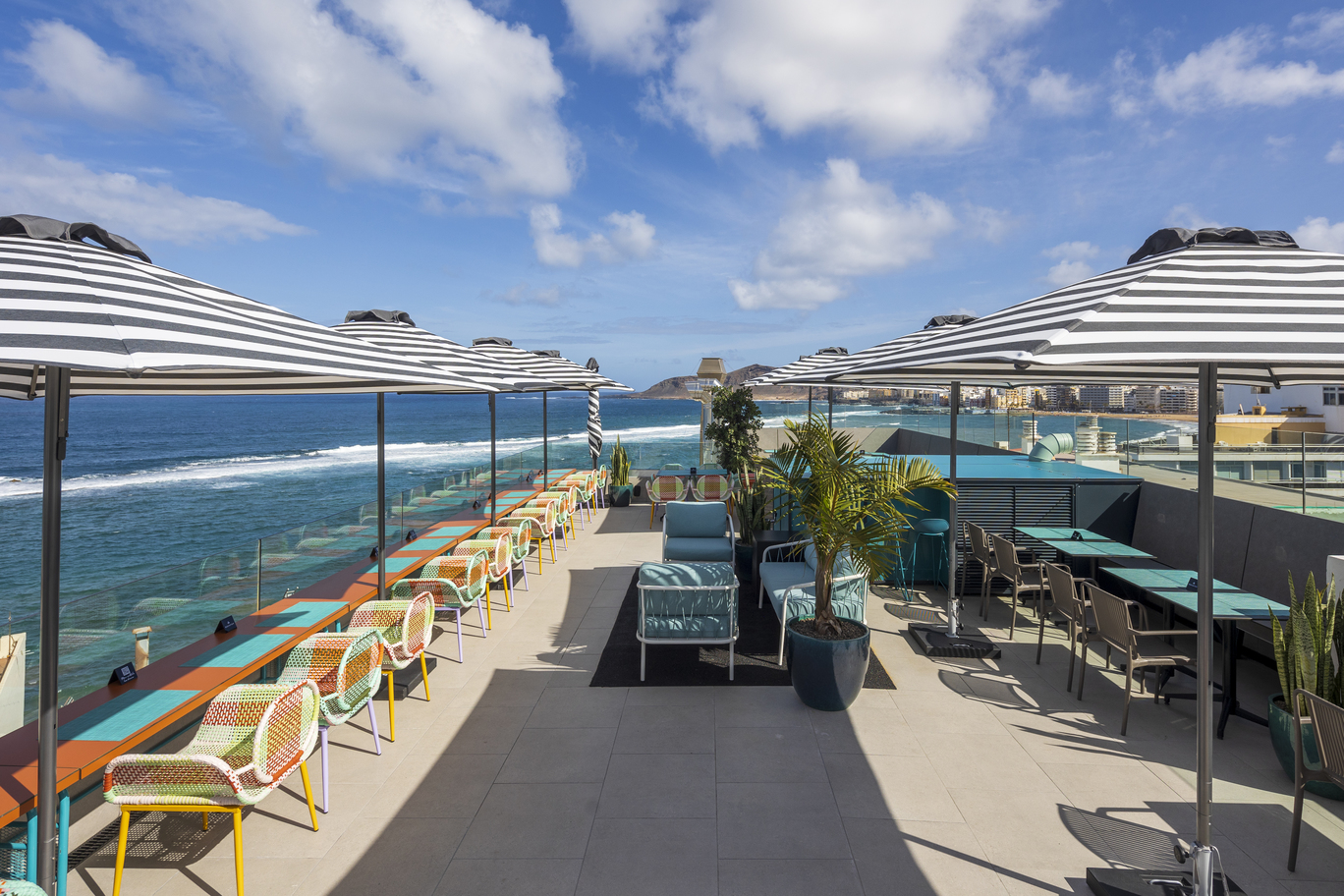The island of Gran Canaria was formed some 14.5 million years ago by volcanic activity. The abrupt landscape of the island’s peaks and coastline was created by three huge eruptions coupled with periods of inactivity and erosion. One such volcanic formation, Roque Nublo or the Rock in the Clouds, sits 1,813 metres above sea level. It is an 80-metre tall volcanic rock and a former place of worship for the island’s indigenous inhabitants.
The first settlers on Gran Canaria, the Berbers, colonised elevated areas of the island and relied on cereal crops for their livelihood. Their agricultural success is attributed to their precise knowledge of the seasons and changes throughout the year, made possible by observing the sun, the stars and the moon. The modern science of astronomy was considered magic back then and in some cases was confused with religion. The native people came together in sacred places (called almogarenes) to hold ceremonies and worship the celestial god called Acorán. One such place of worship was Roque Nublo. Perhaps they were attracted by its strange shape and altitude, or perhaps because it was the perfect location for observing lunar standstills, an astronomical phenomenon occurring once every 18.6 years when the full moon is at its southernmost position in the sky.
Parque Rural Roque Nublo
Roque Nublo is the third highest point on Gran Canaria, after Morro de la Agujereada and Pico de las Nieves. It is more or less in the centre of the island, in the municipality of Tejeda. Roque Nublo was declared a Natural Space in 1987 and a Parque Rural or Rural Park in 1994, thus becoming a symbol of the island. The landscape around this giant rock seems like something from another planet. It’s packed with pine, broom and the endemic tajinaste with its impressive red flowers.
On bright days, the sun’s rays filter through the pine forest creating a warm and pleasant atmosphere. Look out for Egyptian vulture or kestrel gliding effortlessly on the gentle trade winds that are largely responsible for the year-round good weather on the islands. If you want to see some clouds, go against your instincts and look down – the winds direct the clouds towards the mountain sides, creating a calm and soft sea of clouds that looks like candy floss. Above 1,500 metres, the post-sunset landscape becomes even more beautiful with golden hues and the first evening shadows.
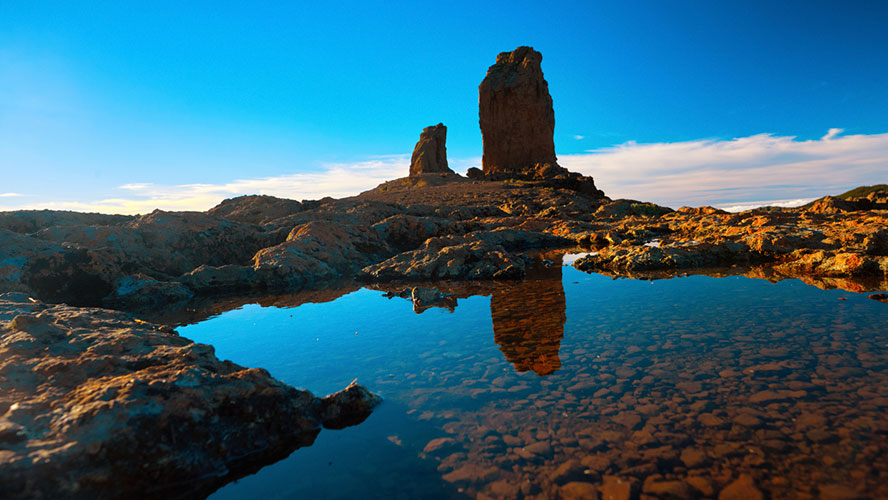
Walking to Roque Nublo
The 3-km trail to and from Roque Nublo starts on the main road. Leave your car in the parking area at La Goleta. The trail is waymarked and not particularly challenging, making it suitable for children and older people (there are even stargazing excursions for those interested). Along your way you’ll be treated to spectacular views of the Caldera de Tejeda, the Pozo de las Nieves, and the strange Roque del Fraile rock formation that looks like a monk in robes overlooking the valley. Also keep your eyes peeled for the Roque de la Rana. It looks like a frog atop a water lily peering towards its neighbour, Roque Nublo.
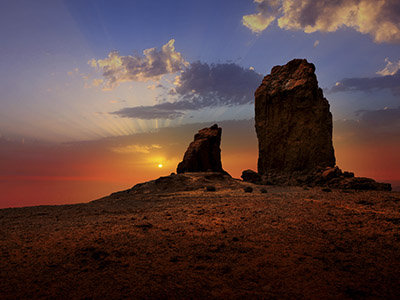
The path meanders through pine forest, ancient lava flows and stone columns all the way to the top, where it opens out into a spectacular landscape that will take your breath away. The panoramic views here are considered among the best on the island, and it’s possible to see all the way to Teide (Tenerife) over the Atlantic. The fresh clear mountain air will help you recover from the climb while your eyes marvel at the valleys, ravines and small villages dotted between the mountains. This is one of the most special places on the whole island, and the walk to the top really is worth it.
This area of the Caldera de Tejeda also has the Roque de Bentayga, the last bastion of the indigenous Canarian people before it was conquered by the Kingdom of Castile in a battle that lasted almost a century in its entirety. The island of Gran Canaria had two indigenous kings or guanartemes: Bentejuí and Tenesor. The first fought against the invading royalist forces to the end. He led his people from Roque de Bentayga to the Tirajana ravine and eventually threw himself over the edge rather than surrendering. The second was captured and brought before the Catholic Monarchs. He returned to the island as an ally of the enemy with the name Fernando de Guanarteme, intent on making his former people surrender. Many saw him as a traitor while others considered him a peacekeeper who wanted to avoid the massacre of his people. It remains a controversial part of the local history today.
It’s no surprise that this ancient monolith has captivated thousands of people throughout history, among them musicians, painters and writers. Miguel de Unamuno described the landscape around Roque Nublo as ‘a petrified tempest’. The singer Néstor Álamo (who in 1936 composed Sombra del Nublo (Shadow of the Clouds), now an anthem on Gran Canaria) referred to it as a ‘lunar rock’, ‘alter of my beloved land’, and ‘soul of fire and lava by the sea’. These words are like an echo of the past and are deeply rooted in the hearts of the local people.




































































